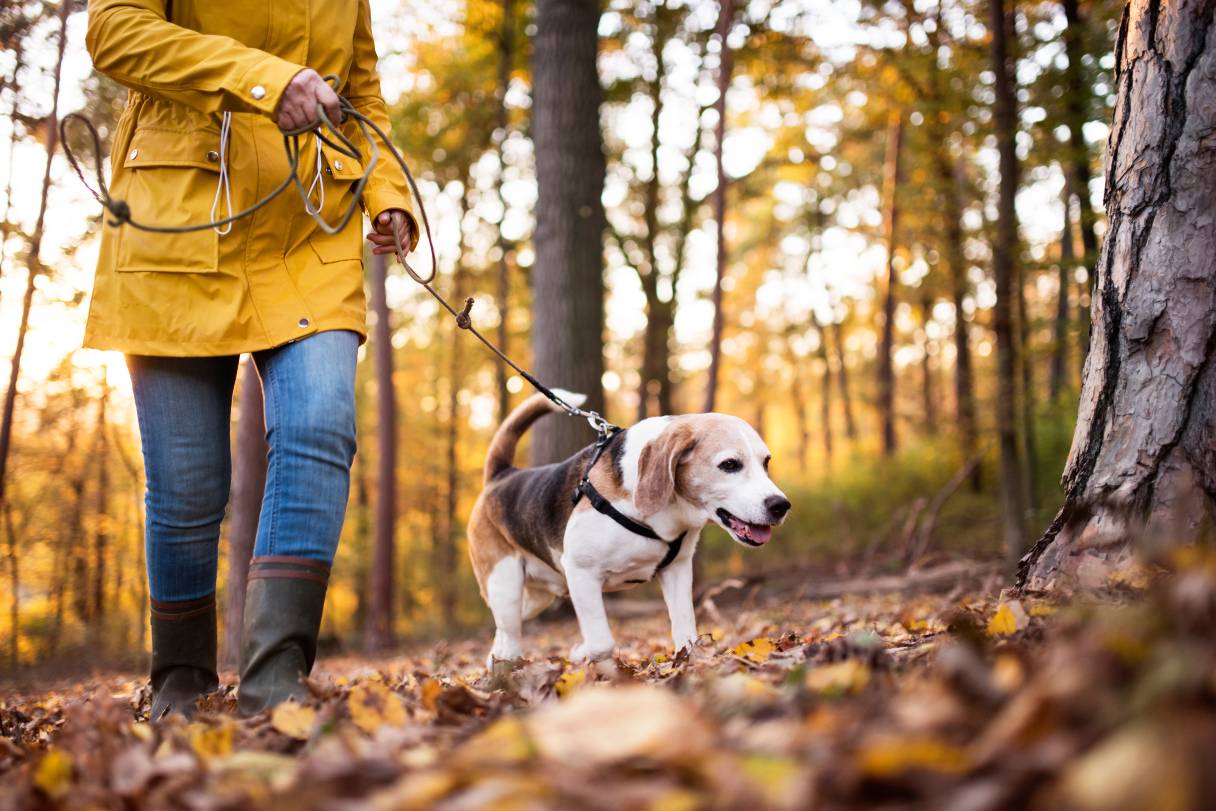Molly was running in the park when her owners, Sharon and Michael, suddenly saw her start limping. She was still her happy self, of course — nothing ever slows Molly down! — but now she was running on three legs. Concerned, Sharon and Michael took Molly to the veterinarian where they learned that she had a cranial cruciate ligament (CCL) rupture. Similar to an ACL tear in humans, a CCL tear in dogs causes pain, inflammation and instability in the knee joint.
Their veterinarian explained that unlike an ACL tear in humans, which tends to occur due to a traumatic injury, a CCL rupture in dogs more often tends to occur due to gradual degeneration of the cranial cruciate ligament over time. This happens due to factors like genetics and obesity. Below, we outline common symptoms you may notice if your dog has a potential CCL tear.
1. Lameness
Limping on the affected hind leg is the most common sign of a CCL rupture; it is usually the first sign that pet owners notice. Lameness due to a CCL rupture can vary in severity and is often intermittent, meaning that the limping will come and go.
2. Pain
In addition to limping, which occurs due to pain in the affected leg, your dog may also display pain on palpation of the stifle (knee) joint or hyperextension of the leg.
Although it is difficult to see your dog in pain, never give your dog any over-the-counter pain medications or those intended for humans. Many of these medications are toxic for dogs, especially if dosed incorrectly.
3. Meniscal Click
If your dog's knee makes a clicking noise when the stifle joint is flexed, this may or may not indicate an injury to the meniscus, a pad of cartilage located in the knee joint. This test is an unreliable indicator of stifle injury, as some dogs with a torn meniscus will not have a click, while others with a normal meniscus will have a meniscal click.
When observed in combination with other signs of a CCL rupture, a meniscal click can increase your veterinarian's suspicion of cranial cruciate ligament disease in your dog.
4. Abnormal "Sit Test"
A quick and easy test you can perform at home is asking your dog to sit as squarely as possible. A healthy dog should be able to bend both knees equally and sit square, while a dog with a stifle injury will often extend the affected leg out to the side because it hurts to bend the knee.
5. Muscle Atrophy
Measuring the circumference of the thigh — or simply palpating the thigh muscles on the affected leg compared to the normal leg — can help your veterinarian determine whether stifle injury has occurred in chronic cases.
In a dog with CCL rupture, the affected leg will typically have less muscle mass due to muscle atrophy from decreased weight bearing. Conversely, the healthy leg may have a slightly larger than normal muscle mass from compensating for the injured leg.
6. Thickened Stifle (Medial Buttress)
In chronic cases of CCL rupture in dogs, the inside of the tibia (shin bone) at the level of the stifle joint develops a firm, fibrous thickening called medial buttress. This thickening of the stifle can often be felt by your veterinarian during a physical examination.
7. Loss of Range of Motion
Many dogs with CCL rupture, particularly those for whom the condition has been ongoing for some time, will experience a decreased range of motion in the stifle joint. Pet owners may notice stiffness in the affected limb.
During a physical examination, your veterinarian may evaluate the range of motion of several joints, which helps your veterinarian determine exactly which joint is injured.
CareCredit Financing For CCL Tear in Dogs
Your dog is your best friend, and you want to make sure they get the very best. That's why the CareCredit credit card is here to help you manage the costs of diagnostics and treatment for conditions like CCL tears.* Apply today and use our Acceptance Locator to find a veterinarian near you that accepts CareCredit. CareCredit is there for you and your pet every step of the way; continue your wellness journey by downloading the CareCredit Mobile App to manage your account, find a provider on the go, and easily access the Well U hub for more great articles, podcasts, and videos.
Author Bio
Dr. Elizabeth Racine is a small animal general practice veterinarian and freelance writer. She covers both human and veterinary medicine with a special interest in nutrition, internal medicine, and veterinary behavior.









